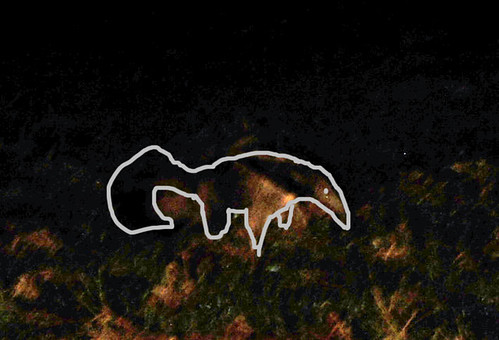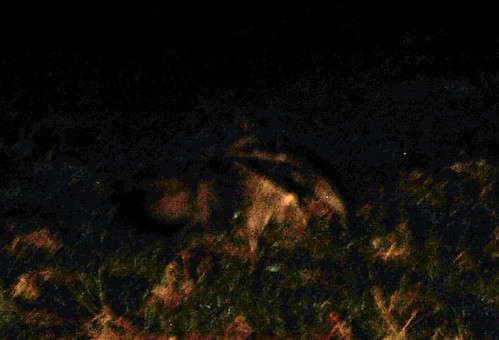So when I first began the Venezuela posts I mentioned that a number of nature bloggers had recently seen similar stuff in Guyana and that my Venezuela posts would cover similar taxa to Julie's Guyana posts (though inevitably less eloquently). The Venezuela posts continue to be strung out but this post covers an area Julie covered and provides an interesting contrast between our two experience that I thought warranted detailed comparison. Way back in January 2009 Julie posted two posts about her trip to see Giant Anteaters on Guayana's savannah. You can read those here and here and I'd recommend you do so. The gist of Julie's experience was, on my reading of her account, that they drove around the Savannah in the morning looking for anteaters and upon finding one it was pursued by vehicle and ultimately herded on foot towards the viewers. This was apparently a rather stressful looking exercise and concerns were (it would seem rightly) raised about the sustainability and ethicality of such methodology. My giant anteater experience was rather different hence this post. Before we get to methodology lets look to results. Did we see anteaters? Yes. Yes we did. In fact we saw eleven (11!) of them. Which was nice.
The methodology used at Hato el Cedral involves looking for the anteaters at night. This has two benefits. Firstly the anteaters are active at night so they are easy to find, on the move and already active so not being woken. Secondly the other nocturnal stuff is out and about too including owls and nightjar and foxes for us as well as potentially the weird fluffy arboreal anteater and a range of cats (puma was sighted the night we arrived, ocelot is apparently seen reasonably frequently and whilst not yet seen there is no reason to rule out jaguar as a possible). Plus amphibians, snakes and similar stuff of course. The basic technique will not be unfamiliar to most. You drive around in the bed of a pick-up scanning around with a spotlight until you see reflected eyeshine whereupon you head in that direction for a closer look. With fences and ditches of crocs dotted around the farm there is no question of pursuing anything off road so you get close enough for good views and then the beast leisurely trots off back into the dark. We did try approaching one (presumed - it would've been the twelfth) anteater on foot for better photos and whatever it was disappeared completely (which was a little scary). There is of course a disadvantage - you're in the dark. This raises some issues with photography. I had anticipated the need for flash in advance and bought a nikon external flash with me. Unfortunately it proved to be ideally suited for illuminating little girl's tea parties as opposed to beasts lurking in the distant gloom and hence my photos were all rubbish. Nonetheless here, after a hefty amount of photoshop, is a venezuelan giant anteater:

Yeah. It wasn't the best of experience from a photography point of view but we got great looks at a spectacular mammal. Properly equipped photos should be no problem (though of course powerful flashes should be used on wild animals with caution and restraint with a view to the animals welfare). I saw no signs of stress behaviour in the animals we saw, they moved off but were on the move when first seen and there was no acceleration, they just bimbled off into the night.
It has to be said that this is a truly spectacular species and it has the sort of charisma that makes it one of those animals tourists will love to see (think whales and dolphins, south africa's penguins and so forth) whether they are nature-lovers or not. Hopefully at least some of the areas they exist will be able to find a way to run sustainable ant-eater trips which will encourage the protection of their habitats. Its worth noting that giant anteater is surprisingly widespread across south america and one would hope that this remains the case and it can continue to wander the continent's plains.
It has to be said that this is a truly spectacular species and it has the sort of charisma that makes it one of those animals tourists will love to see (think whales and dolphins, south africa's penguins and so forth) whether they are nature-lovers or not. Hopefully at least some of the areas they exist will be able to find a way to run sustainable ant-eater trips which will encourage the protection of their habitats. Its worth noting that giant anteater is surprisingly widespread across south america and one would hope that this remains the case and it can continue to wander the continent's plains.

2 comments:
That must have been a blast.
It was awesome FC; so much cool stuff out on that grass!
Post a Comment